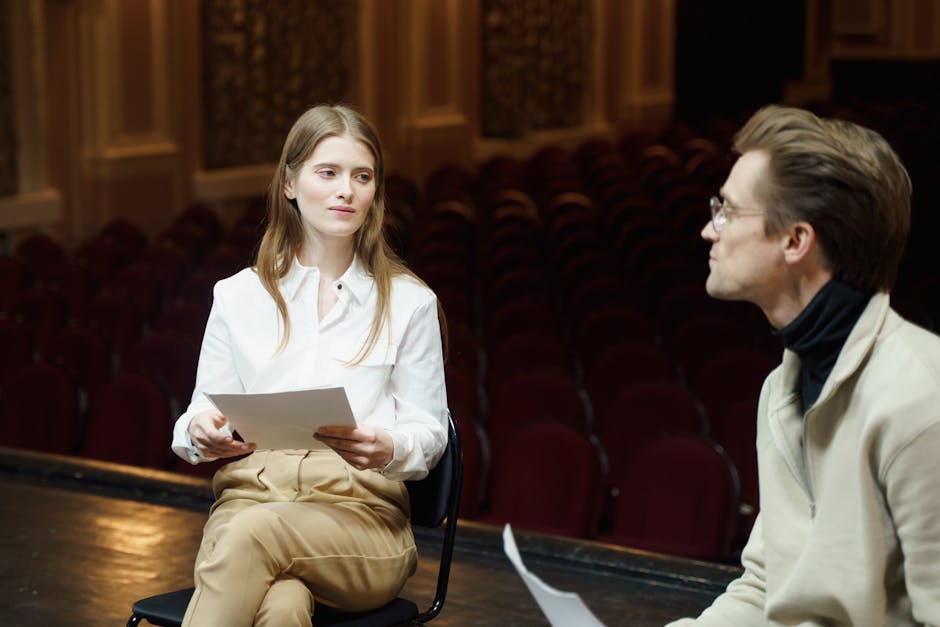No products in the cart.
The Stage Awaits: AI’s Role in Theatre Education
AI is reshaping theatre education, offering innovative ways to train the next generation of performers. Explore this digital transformation.
Theatre has always been a crucible of creativity, where the human experience is distilled into performance. But now, a new player is entering the spotlight: artificial intelligence. Imagine a world where budding actors and directors can refine their craft using advanced algorithms, personalized feedback, and immersive simulations. This is not a distant dream; it’s happening now in theatre education.
AI’s role in the performing arts is multifaceted. From enhancing script analysis to offering tailored training programs, its capabilities are reshaping how students learn the intricacies of performance. Institutions around the globe are embracing this technology, recognizing its potential to prepare students for a rapidly evolving industry.

Take, for instance, the innovative programs at the Juilliard School, where AI-driven tools assist students in honing their craft. Using machine learning, the school has developed applications that analyze speech patterns and emotional delivery, providing real-time feedback to actors. This personalized coaching is akin to having a seasoned director at your side, guiding your every move. According to Dr. Emily Carter, a professor of drama at Juilliard, “AI allows students to experiment and learn from their mistakes without the pressure of a live audience.”[1]
However, the integration of AI into theatre education is not without its challenges. Critics argue that relying too heavily on technology risks stripping away the essential human connection that defines theatre. “The magic of performance lies in its unpredictability,” says veteran actor and educator Michael Thompson. “An algorithm can’t replicate the chemistry between performers or the energy of a live audience.”[2] This sentiment echoes a broader concern in creative fields: as technology advances, how do we ensure that the human element remains intact?
“We must ensure that all students, regardless of their background, have access to these innovative tools,” emphasizes Dr.
Moreover, the question of accessibility looms large. While AI tools can enhance learning, they also require resources that not all institutions can afford. Smaller theatre schools may find themselves at a disadvantage, unable to keep pace with their technologically advanced counterparts. “We must ensure that all students, regardless of their background, have access to these innovative tools,” emphasizes Dr. Anita Singh, a leading advocate for equitable arts education.[3]
The potential of AI in theatre education extends beyond individual training. It can also revolutionize the way performances are produced. For example, AI can assist in set design, lighting, and sound, streamlining the creative process and enabling artists to focus on storytelling. The Royal Shakespeare Company has begun experimenting with AI-generated stage designs, allowing directors to visualize their concepts in a matter of hours instead of weeks. This not only saves time but also inspires creativity by presenting ideas that may not have been considered otherwise.
Furthermore, AI can enhance audience engagement. Interactive applications that allow viewers to influence the narrative in real-time are already being piloted in some productions. Imagine a theatre experience where your choices shape the story, blurring the lines between performer and spectator. This level of interactivity could attract a younger audience, breathing new life into the art form.
Yet, as we embrace these innovations, it’s crucial to maintain a dialogue about the ethical implications of using AI in the performing arts. How do we safeguard artistic integrity while harnessing the power of technology? As the lines between human creativity and machine learning blur, the industry must come together to define the role of AI in a way that enhances rather than diminishes the art form.
Looking ahead, the future of theatre education seems poised for transformation. As AI technologies continue to evolve, so too will the methods of training and performance. Students equipped with AI-driven tools will enter a workforce that demands adaptability and creativity, ready to tackle challenges in an ever-changing landscape.
As the lines between human creativity and machine learning blur, the industry must come together to define the role of AI in a way that enhances rather than diminishes the art form.
In a world where technology often feels impersonal, the arts remain a sanctuary for human expression. By thoughtfully integrating AI into theatre education, we can cultivate a generation of performers who are not only tech-savvy but also deeply connected to the essence of their craft. As we move forward, the challenge will be to strike a balance—leveraging the power of AI while cherishing the human stories that lie at the heart of every performance.











